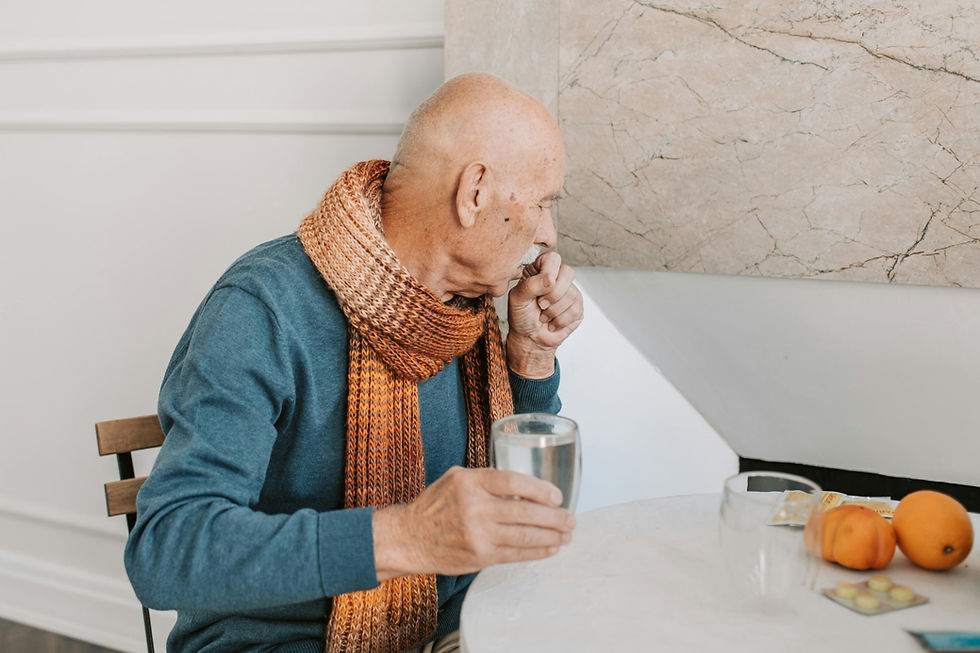Healing Through Harmony: Nurturing Grief through Yoga and Self-Care
- Health Projects Center

- Jun 30, 2023
- 4 min read

Randee Schwartz
It’s easy to pontificate about wellness when the sun shines and our bodies feel omnipotent. We arise from our eight hours of uninterrupted slumber to meditation and a mug of green tea.
Yet, when life strikes, our rituals often flee first. How can we salute the sun when all we can think of is grief? How do we maintain a positive outlook when uncertainty gnaws at our very being?
There is discomfort in just being. In just being alone with our thoughts, memories, and bodies. We try to distract ourselves from this feeling. We fold the laundry. We unload the dishwasher. We try to focus on the task at hand. We try to choreograph our thoughts. But we feel like we have failed. We have fallen off center.
We sense duplicity: discomfort and distrust for our feelings and thoughts.
No self-care ritual or regimen is foolproof. Even when we fortify ourselves with diet, exercise, mindfulness, and meditation, something seeps through. It is heavy, dark, and looming. It leaks into our thoughts, bones, and words. We have changed despite our best intentions.
How do we find our center when the map has changed? After a loss or during uncertainty, our life view changes. Our focus and our perspective change.
When we practice yoga on the mat, we cultivate our Drishti. Drishti refers to where our eyes focus in each posture (asana). Drishti overwhelmingly affects our experiences on the mat. If we are disciplined, really disciplined, about where our gaze falls, then the thoughts in the mind will slow. We will hear our breath. The periphery will stay on the periphery. We might also notice new sights in our familiar surroundings – yes, a crack in the wall, a spider on the floor, but also perhaps a friendly freckle on our ankle – or the unique design of time’s etchings on our hands. It’s temporary. We can’t stay on the mat forever. Yet, this small solace can eventually alter our perspective when we are off the mat.
Playing with our Drishti turns mundane activities into mindful experiences. Try holding eye contact when speaking with others. What do we notice? Try focusing on our surroundings more when we walk. Listen to the voices of others when we wait in line or ride public transportation. We are reframing our view of the world. We are relearning our role. We are reidentifying. We need to start small.
Sometimes, Drishti is about closing our eyes. We can refocus on our experience by turning off our vision to the exterior world.
Your world is changing. Your world has changed. Your perspective needs to change.
What are your priorities right now? What can you take off your to-do list? How can you serve yourself in this moment?
Do you need rest, nourishment, a scream, or a hug? Your perspective is changing: your needs may have to.
Finally, I will suggest a few yoga postures that metaphorically inspire a shift of Drishti. These asanas encourage you to shift from “doing” to surrendering into “being.”
Allow your bones to sink into the Earth in these poses. As your body relaxes into the Earth and its elements, may you find grace for your body and acceptance for your mind.
You are right where you need to be.
Child’s Pose

Draw your big toes together and separate your knees wide apart. Crawl your hands as far forward as they’ll go. If your head levitates from the floor, nestle a pillow underneath your forehead. Roll your head from side to side until you find the perfect place for your brain to rest. Then close your eyes, turning your Drishti, your focus, inwards. Experience the surrendering of the heart to the Earth, while you sense the floor pressing back to meet you. Let your bones grow heavy and let go of the need to fix, to change, to do. You are right where you need to be.
Stay for 2 minutes. To exit, slowly come to your hands and knees. Do a few cat cows or hip circles and then sit comfortably, noticing the effects of the pose.
Supta Badokonasana (reclined butterfly/reclined cobblers pose)

Lay on a soft surface on your back. Draw your knees into your chest and rock side to side. Enjoy the supple movement. Then, draw the soles of your feet together on the floor, letting the knees fall out wide like a butterfly. If the knees are uncomfortably far from the floor, you can place pillows underneath to reduce the effort and invoke serenity. Place your hands on your belly to experience your breath or upon the thighs to surrender into the hip opening. Eyes open to start, Drishti to the sky, accepting the support of the Earth and elements. Close your eyes now.
Right here, right now, just breathing. Right here, right now, just being. Right here, right now, just enjoying the moment.
Stay for 3 minutes. To exit, slowly use your hands to draw your thighs together. Rock from side to side and then roll over to the fetal position on one side. Stay here for five breaths. Finally, with a relaxed neck, slowly press up to a seated position. Notice the effects of the pose.








